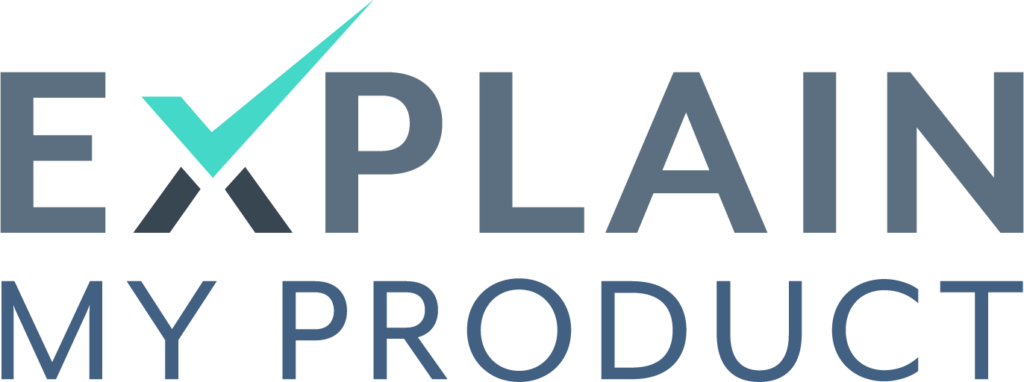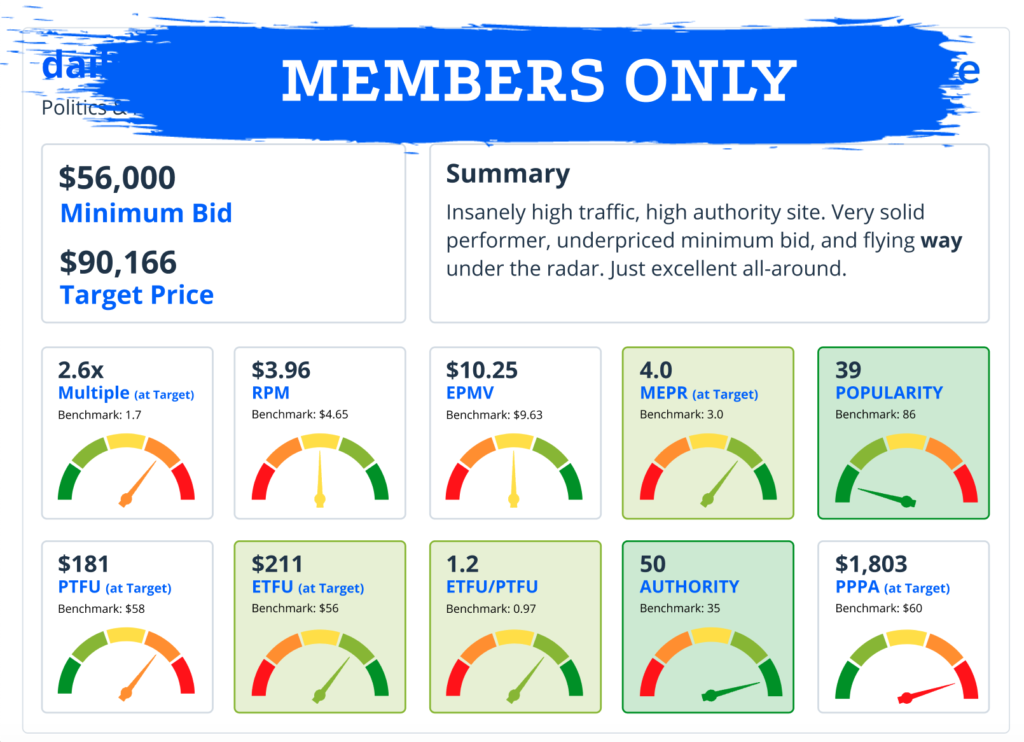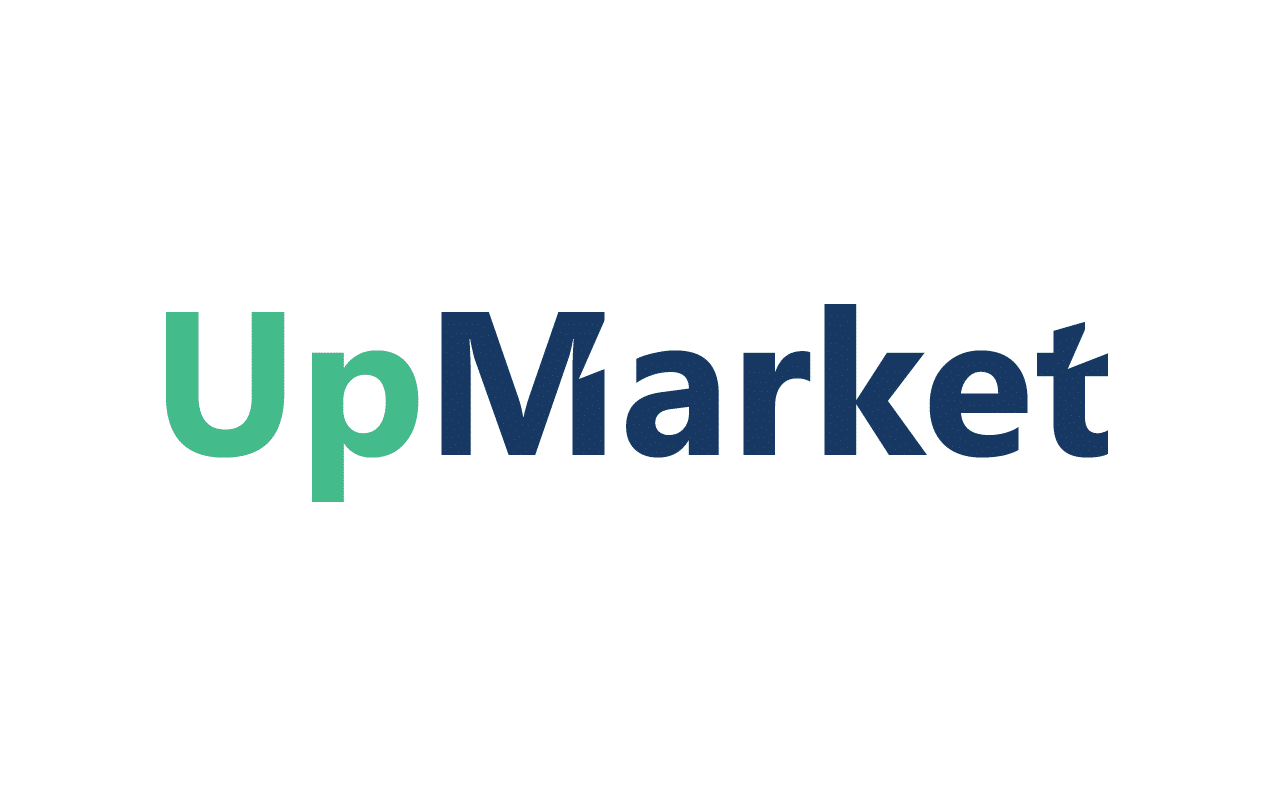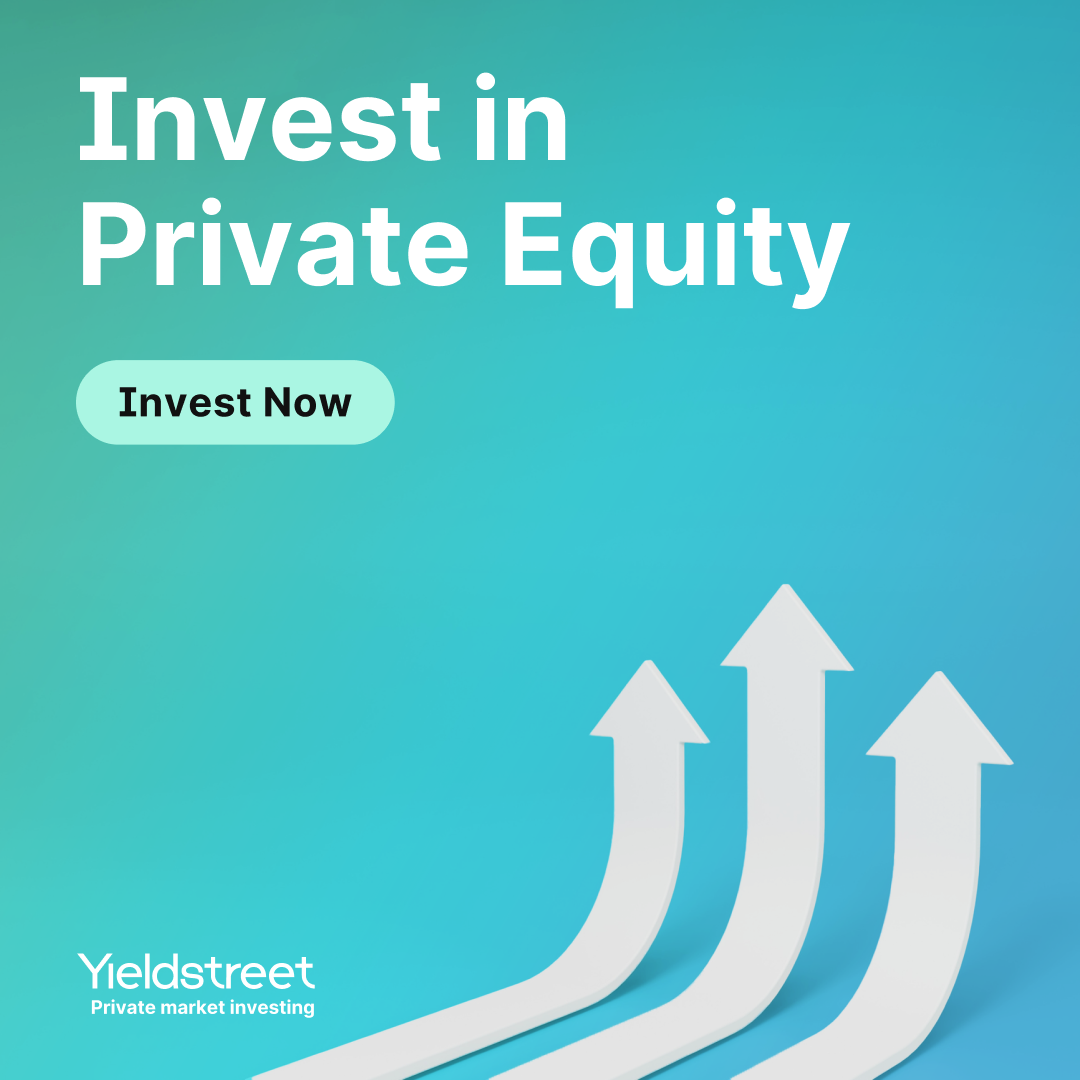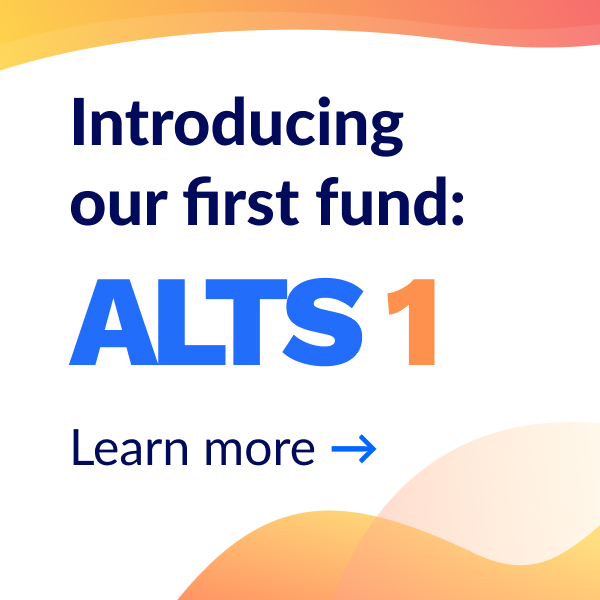Opportunities for buying & bundling as the industry evolves.
Welcome to issue #8 of Alternative Assets. This week’s newsletter is a newsletter about newsletters. (So meta, I know.)
Let’s dive in!

Table of Contents
Interview with Yaro Bagriy
This week, I had the pleasure of sitting down with Yaro Bagriy for a 40 minute chat.
Yaro is a Minneapolis-based indie maker, developer, microbusiness hustler, and all-around good guy. He’s the founder of IndieStack, which is a private community for bootstrappers that recently hit #1 on ProductHunt. He also founded Newsletter Crew, a podcast & community for newsletter creators.
I first heard about Yaro a few weeks ago, when I saw he acquired IndieMailer — a competitive newsletter community. As a member of the IndieMailer community, I was really intrigued when I heard about this acquisition. I wanted to find out more about how he made the acquisition happen, and what his future plans are.
In our chat we discussed how he manages his time between his different micro-businesses, how he valued IndieMailer before acquiring it, newsletter acquisitions in general, and his take on some industry trends:
I think the trends of curation-based newsletters are here to say. As someone who’s a part of many communities, I don’t have time to be in other people’s communities. I still want to be in that space, and I still want to keep up with the news. I just don’t have time to filter through everything. I think we need curators.
Another trend that I’m seeing is, I think people are going to be getting away from subscription based newsletters. It’s counter-intuitive to what we’re seeing now, but with newsletter fatigue, there simply isn’t enough money to go around. I mean, how much money are you really going to spend a subscription-based newsletters each month?
-Yaro Bagriy
You can read our full interview (as long as you forgive the occasional transcription inaccuracy) or listen to the interview (as long as you forgive the brief Airpods malfunction towards the end.)
Flipping newsletters for profit
While Yaro bought a newsletter community, one of the topics we covered was the acquisitions of newsletters themselves. Just like buying an existing website is a well-established way to inherit traffic, buying an existing newsletter can be a terrific way to create or add to an existing audience.
But if the world of website flipping is still considered to be in its “teenage years,” then the world of newsletter flipping is just a baby. It may SHOCK you to hear that I firmly believe acquiring newsletters for eyeballs and cash flow will be considered a blindingly obvious growth strategy ten years from now. Today, savvy players are already starting to take notice and make deals on both sides of the market.
One of those people is Chris Osborne. Chris is a serial builder and “perma-traveler” who has been building and selling remote B2B tech startups (such as GrowthList) while traveling around the world with his family for the past 15 years.
But what I find most interesting about Chris is that he’s one of the few folks out there who is actively starting, growing, and yes, selling newsletters. He’s already sold three newsletters, including CryptoWeekly, DailyNames and most recently, FoundersGrid (which is now owned by Smash.vc, whom I wrote about in my issue on fractional website investing).
After scaling & selling three newsletters, what’s next for Chris? Teaching others how to do it, of course! Chris just launched a new course called Profitable Newsletters, with solid training videos, an ebook, and even some email templates to help you land sponsors. Check it out. ?

Risks of newsletter acquisitions
One of the best aspects of acquiring newsletters is that there is very low risk — almost to the point where it’s a complete non-factor.
Unlike with other digital assets, there’s no real learning curve, no messy code to transfer, and no chance Google will whack your SEO with a core update. All the data around subscribers, open rates, and click rates is either out in the open or easily verifiable. Costs to operate are minimal, and revenue streams are abundant. Oh, and you don’t need to be highly technical to get going. Brilliant! What’s not to love?
In fact, the only real risk worth mentioning is probably the key person risk. Newsletters are often (but not always) reliant on one single person. Except in the case of curation/aggregator newsletters, subscribers are often subscribing not just to the newsletter, but to the person behind the newsletter. If that individual changes, will the audience care? Will they stick around?
Another risk is scalability. Unlike with SaaS, there’s no established path to scaling a newsletter outside of sheer hustle. Sure, there are plenty of tricks to hack growth; hence the rise of newsletter communities sharing tips & tricks. But traditional software growth-minded folks might struggle with growing their audience past a certain point. (In fact, the single best way to quickly scale is probably — you guessed it — to acquire other newsletters.)
Newsletter valuations
How to value a newsletter with revenue
Substack’s biggest value prop is that they make it incredibly easy for a newsletter creator to start monetizing. (Side note: It’s incredible what adding a Stripe integration to a marginally better blogging platform can do. Medium could have done this years ago! Except they were too busy promoting already well-known writers and building a half-baked paywall for some reason. But I digress…)
As newsletter acquisitions begin to ramp up, we can probably assume they’ll be valued at the standard 3x – 4x annual net profit multiple shared by other, similar digital assets (mainly content sites with large email lists). Refining the valuation can be done based on the newsletter size, engagement, and the core audience’s propensity to spend.
If you’re trying to understand what your newsletter might be worth in a few years, Leon Lin (author of the decidedly non-boring Avoid Boring People newsletter) has created a comprehensive 5 year financial model for newsletters that you can copy and use as a template.
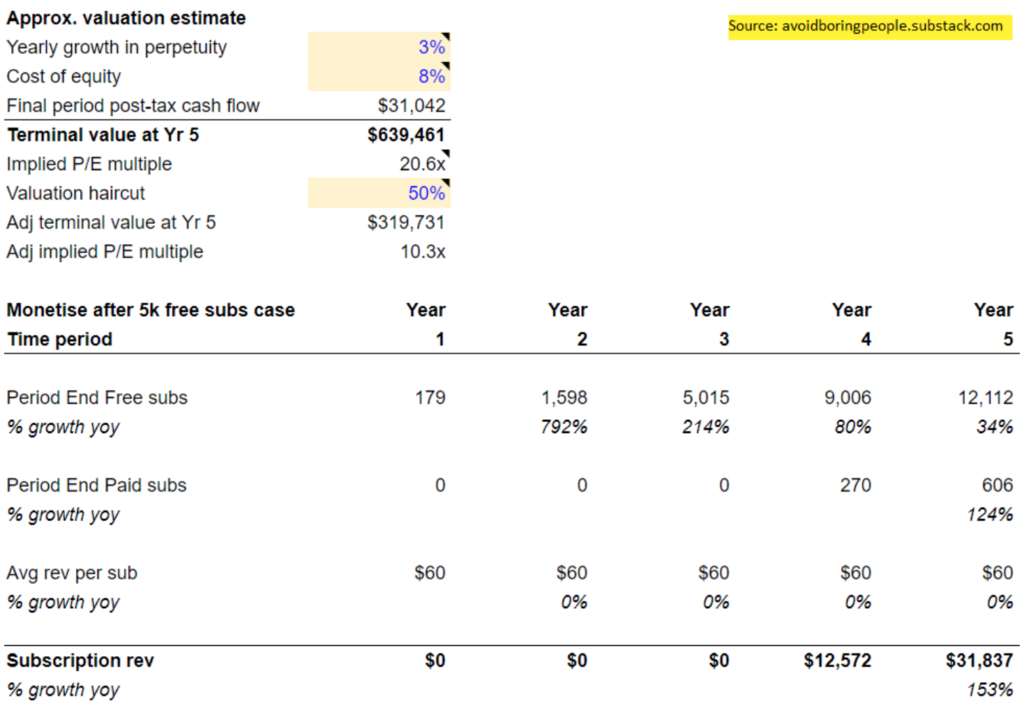
I played around with it, and most of the assumptions look pretty good. I compared his default growth rate assumptions to the growth I’m seeing with Alternative Assets, and was surprised to see it is approaching nearly the same rate (about 30% MoM).
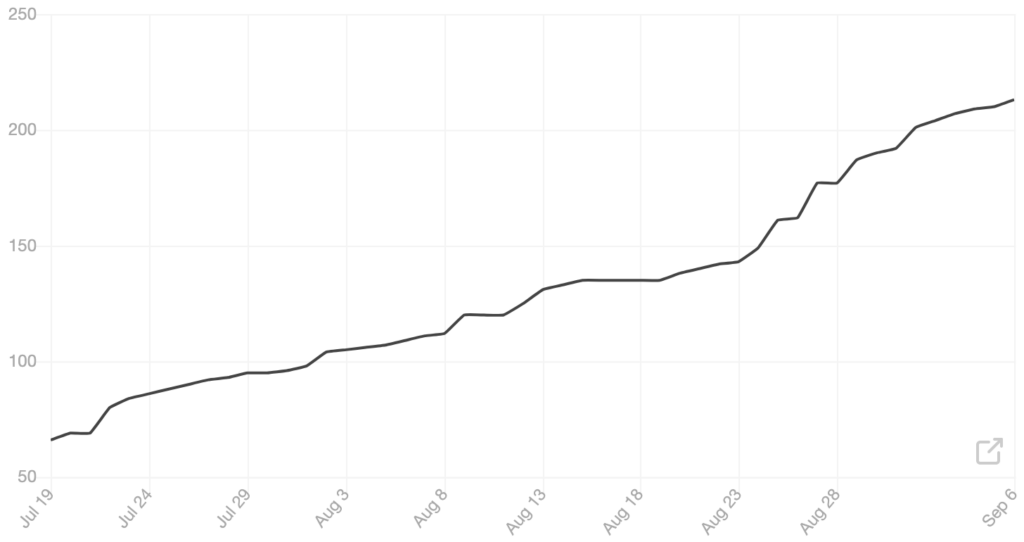
How to value a newsletter without revenue
At this point, nobody really knows how to value newsletters no/low revenue. Valuing newsletters with revenue is one thing. But valuing non-revenue generating newsletters is a much bigger challenge, because the value of a subscriber is unclear.
But what if we tried to peg the value of a subscriber? How would we go about that?
Replacement cost
The first way to value a subscriber would be to simply figure out the replacement cost; i.e., what it costs to acquire each subscriber.
Say you have a newsletter which acquires subscribers through paid sponsorships and Facebook ads. If your average acquisition cost is $2 per subscriber, then to you, a newsletter with 10,000 subscribers would be worth $20,000. And if you paid exactly $20,000 you’d basically just be saving yourself time and energy.
It may be worth more or less to someone else. And this market is probably too young to have a generally accepted benchmark CPA. But at least with this method you know if a newsletter is priced in the same ballpark.
Monetization potential
The other way to value a newsletter without revenue is to figure out the monetization potential. Substack claims that 5-10% of readers convert to paid. (Though from my experience and conversations I’ve had, this figure is definitely closer to 5%.) So let’s be conservative and say 5%
Using our example above, a newsletter with 10,000 subscribers
- First thing you should do is check engagement rates. If the newsletter is for sale, it’s likely (though not definite) that a higher percentage of the audience has “checked out.” There’s plenty of ways to measure this, including open rates, click-through rates, etc. But for argument’s sake, let’s assume the newsletter only has 6,000 “truly engaged” subscribers.
- Assume 5% of these will convert to paid: 300 paid subscribers
- Except, wait, these people don’t know or trust you yet. So let’s be realistic by cutting that in half and saying 2.5% convert. This gives you 150 paid subscribers
- Assume your paid subscription is $10/month. This means $1,500/month in revenue, or $18,000/year
- Finally, using the standard 3x annual net profit multiple, you get $18,000 x 3 = $54,000.
So to you, this newsletter would be worth somewhere between $20,000 — $54,000. A pretty wide range for sure! But the truth lies somewhere in the middle.
Marketplaces for buying & selling newsletters
With new, fresh newsletters starting up every single day, it feels like there’s a bit of a newsletter bubble forming. As hundreds of millions of people are stuck at home around the world, screen time, ecommerce, and all things digital have shot up tremendously.
(People have lots on their minds) + (Nothing better to do) = (Newsletter bubble)
If newsletters are the new blogs, it’s important to remember that of the world’s 164 million blogs or so, most last under a year, and 95% of blogs are left abandoned. Once the newsletter bubble pops and this supply glut dies down a bit, there will almost certainly be thousands of people looking to sell their once-active newsletters (and likely some very good buying opportunities!)
Which begs the question – where should you go to buy or sell a newsletter? As it turns out, there is a new startup that just launched on ProductHunt yesterday: Duuce is hailing themselves as the first marketplace devoted entirely to buying & selling newsletters.
Founded by Jonas, Duuce plans to source newsletters for sale on existing platforms — including Flippa and Sideprojectors. To solve the demand side, he plans to syndicate original Duuce listings back to Flippa & other marketplaces, in order to get more exposure, conversions, and perhaps some branding.
The website is pretty simple at the moment — a landing page with the promise of more to come. I signed up for the (what else) email list, which promises new newsletter buying & selling opportunities in your inbox each month.
Looking for newsletters off-market
It’s fair to think it may take a while for the newsletter acquisition ecosystem to evolve. Until the market matures a bit more, if you’re interested in buying one, my suggestion is to go off-market completely and just reach out to someone yourself.
There’s what, 155 million dead blogs out there? Find one in your niche, contact the owner, and make an offer to buy the audience and continue where he/she left off.
What about dead Facebook Pages? There are plenty of groups which haven’t updated in months or even years. It’s not a newsletter per se, but it’s access to an audience. What difference does it make? In fact, FB page owners may be even more receptive than old bloggers — and the outreach feels a bit more “natural” than a cold email.
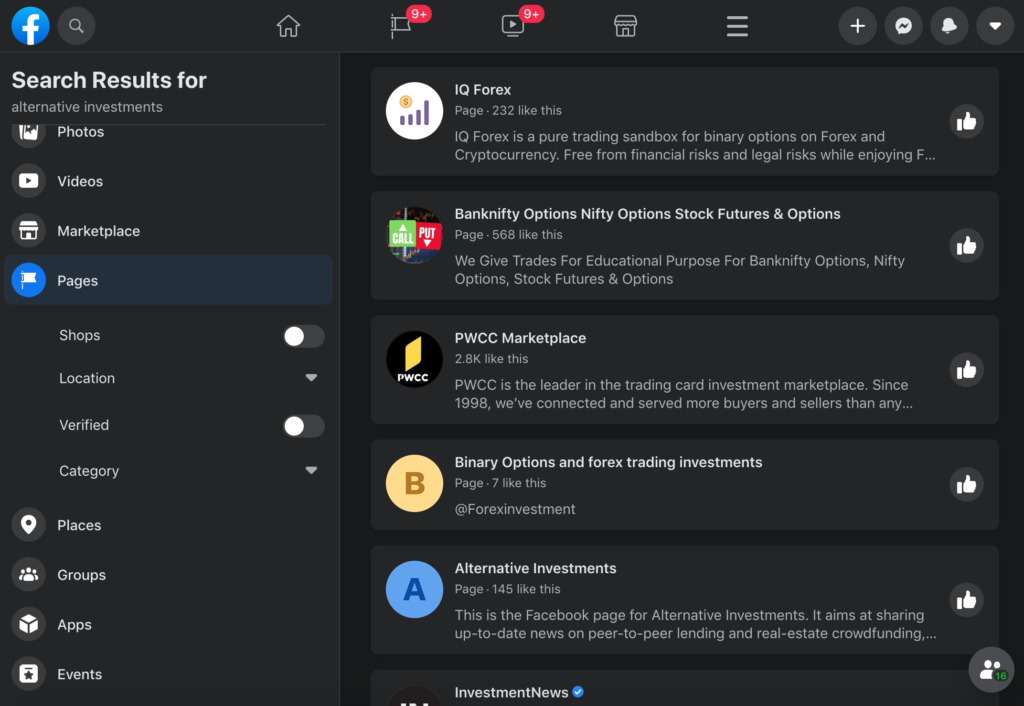
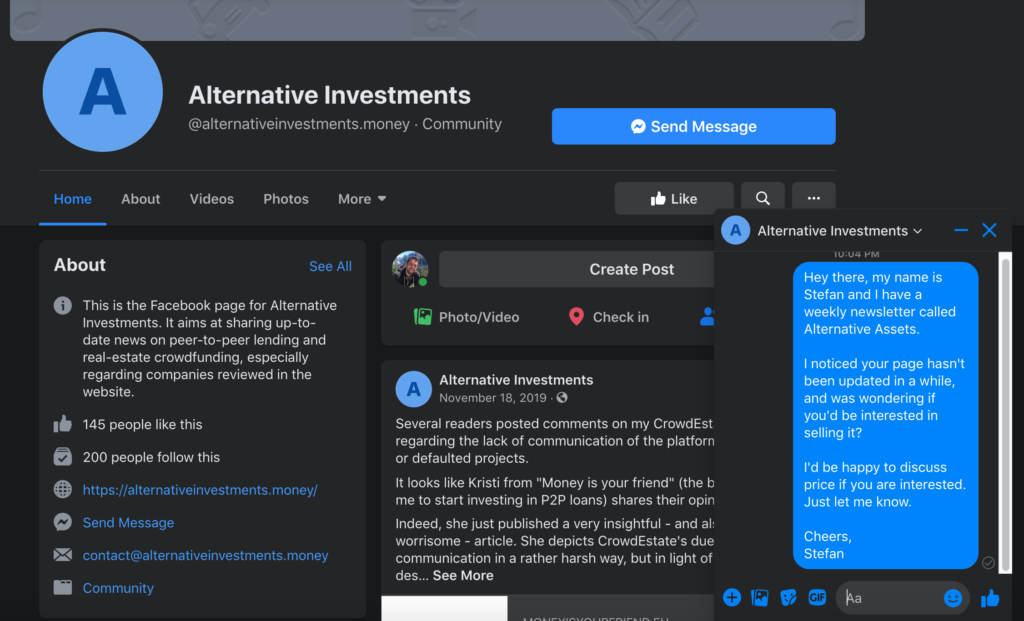
Put the pieces together. Find an opportunity. Make something happen.
Update: I’ve just completed my first newsletter acquisition!
Sponsored
Need quick feedback on your site?
ExplainMyProduct is a way to get free online user testing for your website, landing page, or mockup.
ExplainMyProduct reviewers don’t hold back. They identify your blind spots and uncover hidden biases. They’ll let you know what resonates, what needs refinement, and what isn’t working at all.
You have one chance to make a good first impression. Get honest, unbiased feedback delivered within 72 hours.
Newsletter bundling
Another newsletter trend I’m excited about isn’t the direct buying or selling of newsletters, but rather newsletter bundling. Taking two or more related newsletters, and combining them into something that has greater value than the sum of its parts. The best example of this is, without a doubt, what Nathan Baschez and Dan Shipper have done with The Everything Bundle.
Nathan started a very popular newsletter called Divinations, where he does some really fantastic explorative writing on business strategy. For the past six months it has been one of my favorite newsletters. His writing style is fun, approachable, and I feel like I learn something new in every single issue.
Back in April, Nathan started doing something unique and, I think, quite brilliant. He teamed up with another newsletter called Superorganizers, creating a sort of content & revenue-sharing partnership. Since then, they’ve continued to add four more newsletters to the mix, rebranded it as the all-encompassing (if not mildly hubristic) “Everything” Bundle, and created a premium $200/year content offering that is truly compelling. (Honestly, I have no idea why I’m not a paid subscriber yet. I don’t think it’s the money. I think I’m honestly afraid of newsletter fatigue.)
What’s especially amazing to me is that there aren’t really any built-in mechanisms within Substack to facilitate this model. Substack doesn’t have shared accounts, or a way to split revenue. They don’t (yet) recommend other newsletters, or help organize cross-promotions But these are all mild blockers. Anyone could have done this. Nathan & Dan just, well, did it.
And we should expect more of this to follow. We’ll likely see more bundling of similar newsletters, and we’ll see bundles get bigger and bigger, until eventually at some point they just sort of turn into a magazine. Or a Reader’s Digest-style publication. Or a media company.
Or who knows, maybe school kids in the future will sell newsletter subscriptions door-to-door!
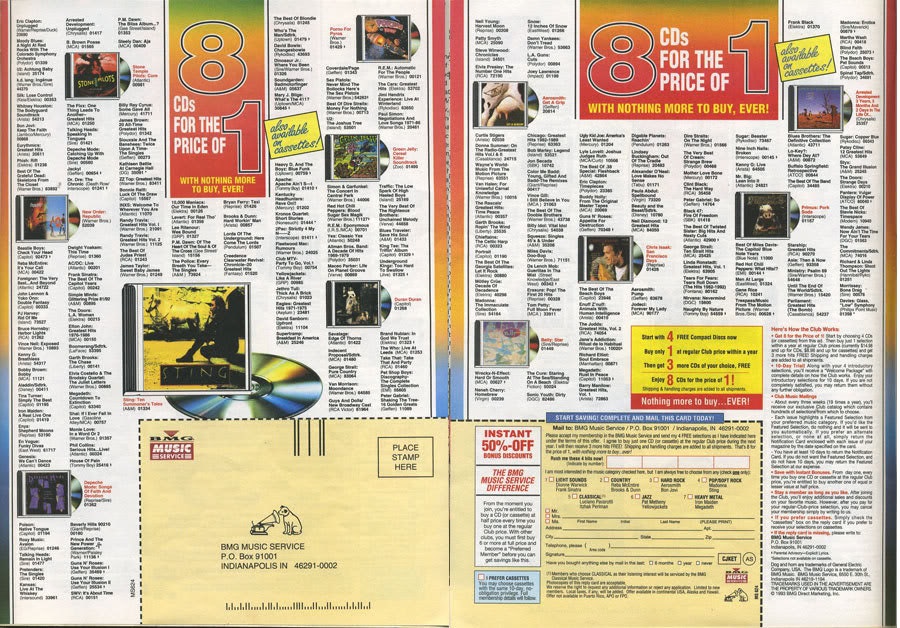

Other news
- Google rocked the PPC world this week when they swiftly implemented a major, staggering change to the way they handle reporting. Historically, when you ran paid ad campaigns, Google gave you click data on every single keyword. This is critical information. It’s how you know which keywords you’re making or losing money on. But with this change, long-tail search queries “without a significant number of clicks” no longer show in reports! This means you won’t know which exact keywords drove traffic, or how to tweak your campaigns. By deliberately hiding data, it makes it tougher to understand where your money is going. This thread below from a PPC expert explains the impact:
With the Google Ads announcement about stripping us of search terms report information, I wanted to look to see how this would impact our ability to optimize and what it would mean for our accounts. It’s HUGE.
— Collin Slattery (@CJSlattery) September 2, 2020
My dataset is 118,000 clicks, $120k in spend & 180 days.
- When it rains it pours. In other Google news, online business blogger Ron Stefanski (no relation, hah!) had an important post about how Google Adsense has been taking away “Invalid Clicks” from his monthly payouts. He estimates this year they have taken a whopping $33,000 dollars. Google announced they would be cracking down on invalid clicks in late 2019, so it’s reasonable to see some decline. But Ron’s numbers, communications with Google, and the fact that others are reporting similar massive drops, suggest something else may be at play here. Luckily there’s a very simple solution for all of this: SWITCH TO EZOIC! ?
Traffic Advantage
Interested in website acquisitions? Check out Traffic Advantage, where I use Moneyball tactics to discover mispriced, undervalued, and hidden gem websites.
This is more than just another weekly deals email. It’s an exclusive newsletter designed to give you an unfair advantage when buying a content website.
Check out a free preview issue, or get a 7-day free trial, which converts to $25/month.
That’s it for this week’s issue!
Do you know of anyone else buying or selling newsletters? Leave a comment & let me know. I’m curious to see who else is making moves in this way.
How’d you like this issue?



